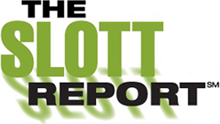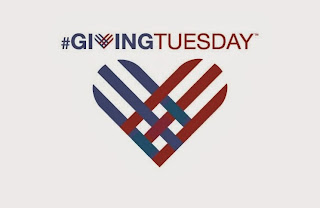Unless you've been locked in the cellar of a medieval castle since the November elections, you've likely heard about the fiscal cliff issue - the popular name given to the impending simultaneous tax increases and budget cuts. No doubt this raises concerns about how going over that cliff, if it happens, could affect you.
That's a significant concern and one you should at least consider, but you should also consider how possible “solutions” to the cliff could affect you as well. One idea that's been the topic of much discussion is a combination of spending cuts and increased revenue through capping tax deductions, which both Republicans and Democrats agree benefit the wealthy disproportionately. That has left many, perhaps including you, wondering how they would be impacted.
If you're concerned about losing your deduction for an IRA contribution, you probably don't have much too worry about. As I discussed earlier this year in a separate article, the IRA deduction is an above-the-line deduction, also known as a deduction to arrive at AGI (adjusted gross income).
To read that article or for more information about how above-the-line deductions work click here.

The IRA deduction, like many above-the-line deductions, has a built in limit. For instance, the maximum IRA deduction for 2012 is $5,000 for those under 50 and $6,000 for those 50 and over. Traditional IRA contributions can be made until the year you turn 70 ½. Similarly, the above-the-line deductions for a self-employed person’s retirement plan contributions, health savings account contributions and for the deductible portion of self-employment tax also have built-in limits. Those above-the-line deductions that don't have built in limits, such as the moving expense deduction, are generally very narrow in nature and are hardly the types of deductions that significantly reduce a person's tax liability year after year.
As a result, it's unlikely that the discussion on limiting deductions would include these above-the-line deductions. Instead, the conversation is likely to focus on below-the-line deductions, also known as itemized deductions. Not everyone uses these deductions on their tax return. That's because you get a choice; either you use the standard deduction or you can use itemized deductions. You obviously choose the avenue to the lowest tax bill.
One reason why itemized deductions are being targeted is that they are disproportionally taken by those with higher incomes.
An article posted on CNNMoney.com on Monday highlighted this fact. The article points out that in 2010 less than 30% of those who had income between $30,000 and $50,000 itemized their deductions, but get this…a whopping 96.8% of those with incomes of $250,000 or more did. As a result, although some families with lower incomes would be affected by a limit on itemized deductions, the wealthiest taxpayers would no doubt be disproportionately affected.
So what are the itemized deductions you should be most concerned about losing and what should you do now to prepare in case those deductions are limited? Obviously, that depends on a number of factors and will vary from person to person, but chances are that if you are itemizing, you are also claiming either a deduction for state and local taxes, charitable contributions or for mortgage interest. Let's take a look at how limiting each of these could affect you in a little greater depth.
State and Local Taxes
If you itemize, chances are you are taking a deduction for state and local taxes. In fact, well north of 90% of those who itemize include this deduction when preparing their return. That percentage is even more staggering when you consider that there are still some states, including Florida and Texas, that don't charge state income tax. If you do live in one of those states and pay more in sales tax than you do in state tax, you are allowed to deduct that total instead. You can't deduct both.
Unfortunately, there's really not a lot you can do here to plan ahead. State income tax is generally charged on income when you constructively receive funds - basically that's when they are made available to you. But it is highly unlikely your employer is going to forward you your 2013 salary before year-end just so you can pay your state income tax this year and claim the deduction on your 2012 return.
However, if you generally deduct sales tax instead of state income tax or are planning on making a big purchase soon like say, a boat, you might want to accelerate that purchase and make sure it's completed before year-end.
Note: As of the end of 2011 the ability to deduct state and local sales tax was eliminated. Many people, however, believe Congress will either extend this break later this year, or retroactively early next year. The information in this section relating to sales tax, and in particular the accelerating of large purchases assumes this tax break is made effective for 2012.
Charitable Contributions
If you itemize your deductions, chances are you are one of the 90% of itemizers who take at least some sort of a charitable deduction. Unlike some other deductions, the tax break for charitable contributions is one deduction you actually have some control over. In fact, you have virtually total control over the deduction since you are the one who decides how much to give to charity in any given year. If you are concerned about a possible limitation of this itemized deduction, you could consider accelerating charitable gifts you planned on making in 2013 or later to 2012. Doing so would allow you to take deductions before any limitation would kick in.
There is, of course, some downside to making such a move. One disadvantage of accelerating your charitable donations into 2012 is that if you can take a deduction for them next year, they could, in a way, be worth more then. Remember, as of now tax rates are scheduled to go up next year for virtually everyone and those in the highest brackets will almost surely pay more. If you are in a higher tax bracket next year, a charitable deduction could eliminate income that would be taxed at a higher rate. Of course, that assumes itemized deductions aren’t limited to 28%, a separate idea limiting the value of itemized deductions that’s been bantered around.
One other item to keep in mind if you decide to accelerate charitable contributions is that there are actually already some restrictions on the amount you can deduct. In general, if you are donating cash, you can deduct up to 50% of your AGI as a charitable contribution. If you are donating property, such as appreciated stock, that deduction is limited to 30% of AGI for donations to most charities.
Mortgage Interest Deduction
Here's another deduction you don’t have too much control over. Your mortgage interest “is what it is.” In fact, you have probably done your best to minimize this deduction. Why would you do that? Well, if you are like most people, before you purchased a mortgage you shopped around for the best rate. A better rate means less interest and less interest means… yep, you guessed it - less of a deduction! Not to mention that as you pay your loan off over the years, less and less of your payment goes towards interest and more goes towards principal, which, despite reducing your mortgage interest deduction, helps you build equity and is generally a good thing.
If you currently own a home and rely on the mortgage interest deduction to make ends meet, it's worth preparing a “what if” budget anyway to see how you might be affected. On the other hand, if you are looking to purchase a home, you may want to run your numbers assuming a limited deduction. The last thing you ever need as a new homeowner is to be coming up short each month because you were counting on a bigger tax refund.
Limiting deductions is just one way lawmakers have proposed averting the fiscal cliff, but it is by no means the only solution being discussed. Let's just hope that whatever comes to pass allows us all to climb back down from the cliff and get back to base camp in one piece.
Article Highlights:
- More high-income earners itemize deductions on their tax forms
- Three itemized deductions to keep an eye on during the "Fiscal Cliff" negotiations are: state and local taxes, charitable contributions and mortgage interest deduction
- By Jeff Levine and Jared Trexler 
























